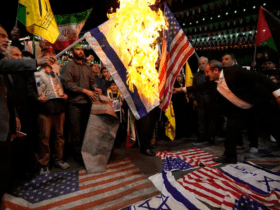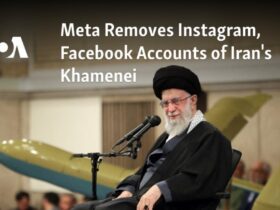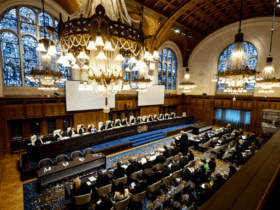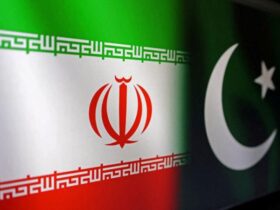In the entanglement of Middle Eastern politics, the recent ceasefire deal between Israel and Hamas surfaces as a beacon of hope amidst an enduring conflict. Yet, the distance between President Biden’s optimism and the cautious stance of the involved parties underscores the complexity of achieving lasting peace.

Key Takeaways
- President Biden’s optimism on the Gaza ceasefire deal contrasts with the cautious responses from Israel and Hamas.
- The ceasefire agreement, mediated by Qatar, marks a significant but fragile step towards halting the violence.
- Challenges in implementing the ceasefire underscore the intricacies of Middle Eastern geopolitics and the need for a durable peace strategy.
The Ceasefire Deal: A Fragile Hope Amidst Conflict
The ceasefire agreement between Israel and Hamas, expected to halt hostilities temporarily, underscores a pivotal moment in the protracted conflict. Mediated by Qatar, the deal’s fragility is palpable, with both Israel and Hamas maintaining a cautious stance. This agreement, while a testament to international diplomatic efforts, remains a delicate pause in a cycle of violence that has plagued the region for decades.
Biden’s Optimism Meets Ground Realities
Despite President Biden’s hopeful outlook, the reactions from Israel and Hamas reveal a starkly different sentiment. Officials from both sides have expressed reservations, highlighting the complexities of translating diplomatic optimism into tangible peace. The discrepancy between Biden’s optimism and the parties’ caution reflects the unpredictable nature of ceasefire agreements in the context of the Israel-Hamas conflict.
Challenges in Ceasefire Implementation
Implementing the ceasefire deal is fraught with logistical and political hurdles. The agreement’s execution requires meticulous coordination and trust, commodities in short supply amidst longstanding hostilities. The role of international mediators like Qatar is crucial, yet the path to a sustained peace remains fraught with challenges that extend beyond the immediate cessation of hostilities.
International and Regional Perspectives
The international community’s reaction to the ceasefire and Biden’s optimism varies, with many advocating for a more comprehensive approach to address the underlying issues fueling the conflict. Regional players, including Egypt and Qatar, play pivotal roles in mediating and facilitating dialogue, yet the long-term success of these efforts hinges on addressing the root causes of the Israel-Hamas conflict.
Future Prospects: Beyond the Ceasefire
As the dust settles momentarily in the wake of the ceasefire agreement between Israel and Hamas, questions loom large about the future. The truce, while a temporary respite, underscores the need for a sustainable path to peace. This section delves into the prospects of extending the ceasefire, the potential for initiating meaningful peace negotiations, and the broader implications for regional stability.
The Ceasefire Extension: A Path to Peace?
The ceasefire, brokered with significant international mediation, offers a crucial window for humanitarian relief and a pause in the violence that has characterized the Gaza Strip. However, its extension remains contingent upon the goodwill of both parties and the continuous support of the international community, including key players like Qatar and Egypt. The potential for an extended truce hinges on the willingness to address underlying issues such as territorial disputes, political sovereignty, and the humanitarian crisis in Gaza.
Navigating the Complexities of Peace Negotiations
Initiating and sustaining peace negotiations between Israel and Hamas presents a formidable challenge, given the historical animosity and deep-seated grievances. The ceasefire deal, however, could serve as a foundation for a more comprehensive peace process, provided there is a concerted effort from both sides and the international community to address the root causes of the conflict. This includes discussions on borders, the status of Jerusalem, Palestinian statehood, and the right of return for refugees.
The Role of International and Regional Mediators
The international community, particularly nations like Qatar and Egypt, along with organizations such as the United Nations, plays a crucial role in mediating between Israel and Hamas. Their involvement is essential not only in brokering temporary ceasefires but also in facilitating dialogue towards a lasting peace agreement. The success of these efforts will largely depend on the ability to maintain neutral and balanced positions, providing a platform for both sides to express their demands and concerns.
Implications for Regional Stability
The Israel-Hamas conflict has far-reaching implications for regional stability in the Middle East. The ceasefire and any subsequent peace negotiations will not only impact the immediate parties but also influence the geopolitical landscape of the region. A sustained peace effort could pave the way for improved relations between Israel and its Arab neighbors, potentially leading to a new era of cooperation and stability in the Middle East.
As we look towards the horizon, the ceasefire between Israel and Hamas stands as a critical juncture in the quest for peace. The challenges ahead are daunting, but the potential rewards of a lasting peace agreement are immeasurable. The international community must remain engaged, offering support and mediation to guide both parties towards a future marked by coexistence and mutual respect.
Building upon the initial exploration of the ceasefire deal between Israel and Hamas and its implications, let’s delve deeper into the nuances and broader context that shape this complex geopolitical landscape. This additional content will focus on the underlying factors contributing to the conflict, the role of international diplomacy in seeking resolution, and the potential pathways towards a lasting peace.
Exploring the Roots of the Israel-Hamas Conflict
Historical Context and Key Milestones
Understanding the origins of the Israel-Hamas conflict requires a journey back to the mid-20th century, tracing the establishment of the state of Israel and the subsequent Arab-Israeli wars. The emergence of Hamas in the late 20th century as a significant Palestinian militant group marked a new phase in the conflict, characterized by suicide bombings, rocket attacks, and blockades.
The Impact of Blockades on Gaza
The Israeli blockade of Gaza, initiated in 2007 following Hamas’s takeover, has significantly impacted the region’s socio-economic conditions. This section would explore the blockade’s effects on Gaza’s population, including restricted access to essential goods, healthcare, and economic opportunities.
The Role of International Diplomacy
Efforts by the United Nations and Other Entities
This part would detail the United Nations’ efforts and other international entities to mediate peace between Israel and Hamas. It would examine past resolutions, peace proposals, and the challenges faced in implementing these agreements.
The Influence of Regional Powers
An analysis of how neighboring countries and regional powers, such as Egypt, Qatar, and Iran, have influenced the Israel-Hamas conflict. This includes their roles in facilitating negotiations, providing humanitarian aid, or supporting one side of the conflict.
Pathways to Peace
Proposed Solutions and Their Viability
Exploring various proposed solutions to the Israel-Hamas conflict, including two-state and one-state solutions, and the potential for a lasting ceasefire. This section would critically assess the viability of these solutions in the current geopolitical context.
The Role of Grassroots Movements and Civil Society
Highlighting the importance of grassroots movements and civil society in fostering dialogue and reconciliation. Examples could include joint Israeli-Palestinian initiatives aimed at peacebuilding and mutual understanding.
Conclusion: Towards a Lasting Resolution
A reflection on the complexity of achieving a lasting peace between Israel and Hamas, considering the historical animosities, political challenges, and the necessity for a concerted international effort to address the root causes of the conflict.
This extended exploration aims to provide a comprehensive understanding of the multifaceted Israel-Hamas conflict, emphasizing the importance of international diplomacy, regional influences, and grassroots efforts in seeking a resolution. The path to peace is fraught with challenges, but understanding the conflict’s complexities is a crucial step towards fostering dialogue and reconciliation.
Share you thoughts in the Comment section of Unicorn blogger !





























Leave a Reply